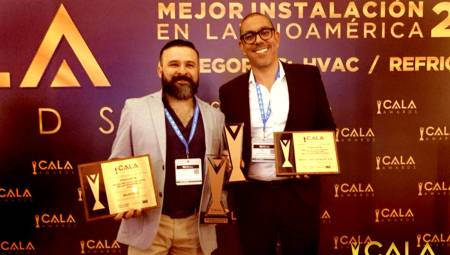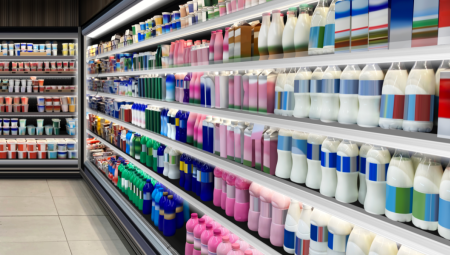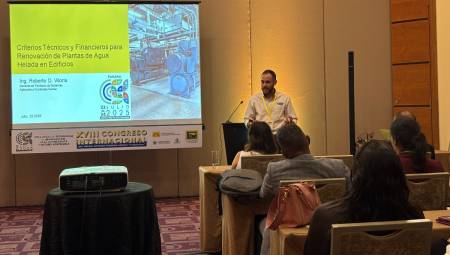by Julián Arcila and Alfredo Manuel Sotolongo*
All of the above coexists in a scenario in which refrigeration and air conditioning systems are becoming increasingly important, since the specialization of the economy has led industrial countries to depend, in many cases, on food imported from remote nations and that require refrigeration for the preservation of food; on the other shore we have a planet with increasingly high temperatures, in which air conditioners are required to remain in a comfortable environment.
If the above is analyzed, the world is in a vicious circle, since refrigeration and air conditioning are required, but these systems in turn have a high impact on global warming and the energy crisis.
It is therefore necessary to review traditional methods of operation, which have historically stood out for their efficiency.
In this case, we will talk about cooling towers applied to air conditioning systems; these are of the open type, in which permanent contact between water and ambient air is allowed. It is important to note that in this class of towers elements such as leaves or dust can enter the water, so some companies choose to close the system with a tower, two water pumps and a heat exchanger. When the open type is used, what is done is that a correct water treatment is carried out so that when they return to the condenser they make it clean, because the chillers and heat pumps have greater durability when said treatment has been done correctly.
Efficiency criteria
The construction boom currently in Latin America is driving the demand for air conditioning systems. Many of them are consuming inefficient systems, as they are usually real estate (residential or office) designed to be sold or leased.
In other cases, when the investor plans to build for his own use, energy efficiency becomes vitally important and this is the scenario of cooling towers. In Latin America, for example, a good number of these new construction projects are resorting to the use of cooling towers with a water source heat pump package, as it is a more efficient modality. It is important to say that although the initial cost may be higher, it will be easily recovered as the equipment is used.
It is worth explaining that a cooling tower, according to the Cooling Technology Institute (CTI), is a heat rejection device, which extracts waste heat into the atmosphere by cooling a stream of water to a lower temperature. Cooling towers usually have a reservoir of water on their lowest surface and this is the coolant routed through the process coolers and condensers in a facility. Cold water absorbs heat from hot air currents from the same process that needs to be cooled, which raises its temperature; it subsequently climbs to the top of the tower and falls in fine jets onto the filler material inside the tower, from where it falls to the original reservoir to circulate again. Throughout this process there are two typical water losses, one by wind drag, when the water comes into contact with the rising air currents, and another by evaporation, which occurs when the cold water from the tank cools the hot water that falls from the top of the tower. In some cases to compensate for these losses it is necessary to replenish new amounts of water to the system. The towers operate with the chillers and water source heat pumps. {mospagebreak}
If the above is analyzed, when working with cooling towers what is done is to cool the system in a more efficient way, because it is cooled with water, which happens much faster than when it is cooled by air, because the water passes through a cooling tower and returns to the much colder system through the use of the atmospheric air.
Now, it is important to clarify that cooling towers are more effective if they are used in large buildings and large complexes such as hospitals, large office buildings, hotels and those with large application of commercial air conditioning (systems over 80 tons), while for small apartment buildings it may not be ideal, since the market is offering certain types of solutions for these applications that can be more effective even if they are air-cooled.
Changes in a well-known technology
In an era of globalized economy, each and every one of the actors in an industry must analyze possibilities to optimize the financial returns of their operations without diminishing the quality of the products and services presented to the market.
In the case of construction and even cooling towers, one of the great difficulties that have arisen has been the rise in steel prices, which comes from 2002, was accentuated in 2004, but was attenuated in 2005 and that from 2006 to the present has practically doubled the value per ton. This material, widely used in the construction of the towers, has been replaced, partially, by fiberglass, without affecting the final quality of the product.
Towers are sophisticated systems, so their maintenance must be carried out by specialized personnel; it is even a system that must be taken care of as if it were a pool, because it is exposed to water and the atmosphere. The fact that it is exposed to the environment was what prompted companies such as Protec Cooling Towers to start developing fiberglass units with their structure in stainless steel, which offers savings by using this metal in smaller quantities. Such a feature guarantees greater corrosion resistance and greater durability in the product, superior to when the structure is made in galvanized.
Another important aspect that has been introduced to the concept of towers is that of greater resistance to strong climatic phenomena such as hurricanes. Technically, it could be considered that this would apply to Florida or that it has nothing to do with the rest of Latin America. However, in the Dominican Republic, towers that can withstand a category five hurricane are being requested, since they need to guarantee that all kinds of systems will continue to operate precisely at this time when a significant number of data centers are being installed in that country.
All of the above presents cooling towers as an important, if not the best, alternative when it comes to air conditioning. Proof of this is the typical efficiency of cooling towers, which has driven their demand in most construction projects in Latin America. According to discussions held with engineers from several countries, in this region, as in the rest of the world, governments are becoming more concerned with rationalizing energy consumption, for which they are offering various incentives, including taxation, to those who stand out in the pursuit of this goal.
*Alfredo Manuel Sotolongo is the president of Protec Cooling Towers. He has more than 15 years of experience in the air conditioning industry and has been part of recognized committees and working groups in ASHRAE, such as TC 8.6, which is responsible for dealing with issues related to cooling towers, condensers and evaporative coolers of liquids, among others. He was president of the MIAMI ASHRAE chapter from 1999 to 2001; it is currently working with Ashrae Region 12, which includes Florida, Puerto Rico and all of Latin America.













